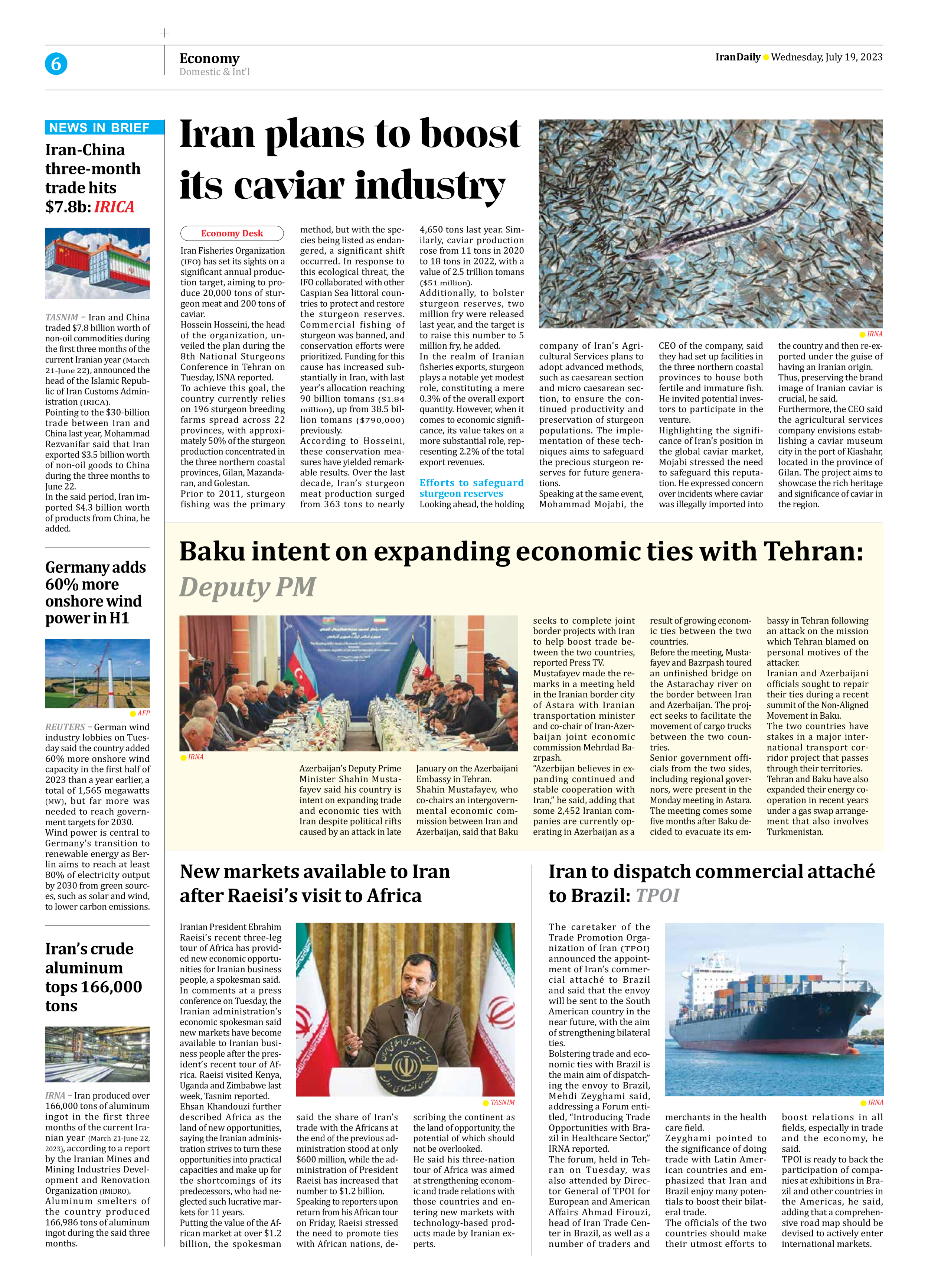
Iran plans to boost its caviar industry
Iran Fisheries Organization (IFO) has set its sights on a significant annual production target, aiming to produce 20,000 tons of sturgeon meat and 200 tons of caviar.
Hossein Hosseini, the head of the organization, unveiled the plan during the 8th National Sturgeons Conference in Tehran on Tuesday, ISNA reported.
To achieve this goal, the country currently relies on 196 sturgeon breeding farms spread across 22 provinces, with approximately 50% of the sturgeon production concentrated in the three northern coastal provinces, Gilan, Mazandaran, and Golestan.
Prior to 2011, sturgeon fishing was the primary method, but with the species being listed as endangered, a significant shift occurred. In response to this ecological threat, the IFO collaborated with other Caspian Sea littoral countries to protect and restore the sturgeon reserves. Commercial fishing of sturgeon was banned, and conservation efforts were prioritized. Funding for this cause has increased substantially in Iran, with last year’s allocation reaching 90 billion tomans ($1.84 million), up from 38.5 billion tomans ($790,000) previously.
According to Hosseini, these conservation measures have yielded remarkable results. Over the last decade, Iran’s sturgeon meat production surged from 363 tons to nearly 4,650 tons last year. Similarly, caviar production rose from 11 tons in 2020 to 18 tons in 2022, with a value of 2.5 trillion tomans ($51 million).
Additionally, to bolster sturgeon reserves, two million fry were released last year, and the target is to raise this number to 5 million fry, he added.
In the realm of Iranian fisheries exports, sturgeon plays a notable yet modest role, constituting a mere 0.3% of the overall export quantity. However, when it comes to economic significance, its value takes on a more substantial role, representing 2.2% of the total export revenues.
Efforts to safeguard sturgeon reserves
Looking ahead, the holding company of Iran’s Agricultural Services plans to adopt advanced methods, such as caesarean section and micro caesarean section, to ensure the continued productivity and preservation of sturgeon populations. The implementation of these techniques aims to safeguard the precious sturgeon reserves for future generations.
Speaking at the same event, Mohammad Mojabi, the CEO of the company, said they had set up facilities in the three northern coastal provinces to house both fertile and immature fish. He invited potential investors to participate in the venture.
Highlighting the significance of Iran’s position in the global caviar market, Mojabi stressed the need to safeguard this reputation. He expressed concern over incidents where caviar was illegally imported into the country and then re-exported under the guise of having an Iranian origin.
Thus, preserving the brand image of Iranian caviar is crucial, he said.
Furthermore, the CEO said the agricultural services company envisions establishing a caviar museum city in the port of Kiashahr, located in the province of Gilan. The project aims to showcase the rich heritage and significance of caviar in the region.







